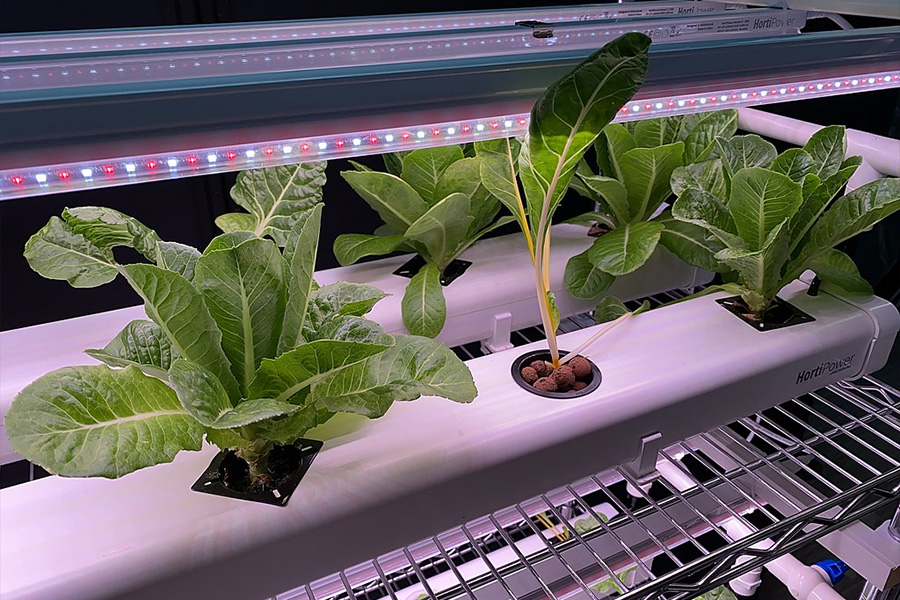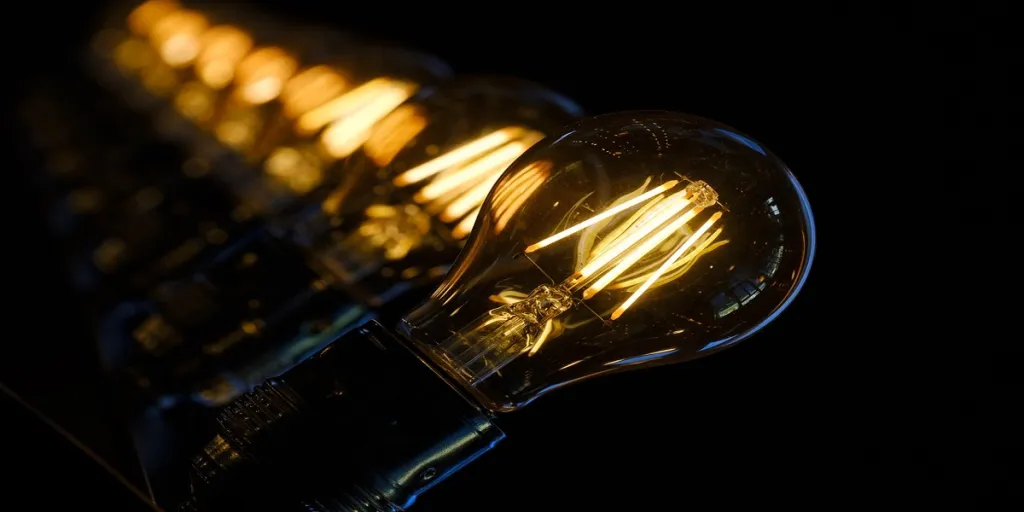It cannot be disputed that sunlight is one of the most important things in the growth and general well-being of a plant. While some plants require direct sunlight to survive, others can thrive in shade or partial sunlight. However, what if you do not have adequate sunlight in your house or garden and there is nowhere to relocate them? This is precisely where grow lights come into the picture and why they have become a lucrative industry in the present times.
This guide shares the top trending grow lights in 2022 to make the selection process for your business portfolio easier.
Table of Contents
Grow lights, the simplest way to keep your plants alive
Overview of the grow lights market
Factors to consider when selecting grow lights
What spectrum do you need for LED grow lights?
Top trending grow lights in 2022
Grow lights are here to stay
Grow lights, the simplest way to keep your plants alive
In the United States alone, houseplants increased their sales by 18% during the COVID-19 pandemic. Being at home caused people to acquire a new hobby, for example, taking care of plants.
It is probable that a certain affection towards them already existed before since the millennials took up the tradition of the boomer generation, i.e., of their grandmothers. However, during the lockdown, this botanic boom increased as there was “more time” to keep an eye on them and monitor their progress, as well as more variety and even elements to keep them not only alive but also aesthetically pleasing. In the same way, luxury indoor plants acquired a space in people’s purchases.
Even with this, there are people who, no matter how much love they have for the plants, cannot bear such responsibility and end up destroying them due to a lack of patience, care, or excess of it. Nobody wants their plant to die overnight, but they are indeed much more complicated to care for than a pet, for example. Plants require a certain amount of water and light, an ideal temperature, their own space, and a variable periodicity of attention, or else they die.
Given this, various methods have emerged that facilitate their care, highlighting a range of grow lights or plant lights among them. These are suitable for both beginners and plant parents because, in addition to being beneficial for plants, they are striking in decoration.
Grow lights are made of LEDs placed around, on top of, or next to a plant—either in a frame, under a cabinet, or inside a shelf. Therefore, it looks like part of the decor and offers the plant constant lighting without losing style.
These grow lights emit brightness and heat emulating the sun, so you can balance their strength to choose the ideal power according to the plant. This will not cause the water to evaporate quickly and will not burn its leaves and stems. For this, it is necessary to approach specialized manufacturers, as well as interior designers, so that they give the best options of plants to have at home that adapt to grow lights.
These augmented and modified grow lights give people a sense of freedom and responsibility. They also adapt to any space, which is a very important detail. This type of tool makes it easier for plants in the future to stop being a fad to become a way to save the planet and, incidentally, illuminates and improves the interior design of a house.
Overview of the grow lights market
Grow lights are essentially LED lights specially designed for indoor plants so they can thrive without sunlight. These lights are a great help as they boost the healthy development of plants by aiding in the process of photosynthesis, resulting in happy plant life. In addition, grow lights offer a range of advantages that are unfortunately not provided by other kinds of lighting technologies, such as a longer lifespan, greater efficiency, compact size, cooler temperature, full spectrum, and state rebates.
In 2020, the global market of LED grow lights was valued at a whopping $1.28 billion. By 2030, it is expected to reach a market size of $12.32 billion. In the same vein, the grow lights market in Europe was worth $780 million last year, and by 2026, it is expected to reach a whopping $1.17 billion. This shows that the market is developing quite rapidly in Europe. In addition, the vertical farming segment is widespread in the Netherlands, China, and Japan, giving rise to the applications of grow lights in these countries.
Different types of grow lights are in trend in the present times. For instance, based on the product, the segment of < 300 Watt seems to dominate over the > 300 Watt products. Additionally, the types of grow lights trending in 2022 include high-intensity discharge (HID), fluorescent, LED, and plasma grow lights.
Factors to consider when selecting grow lights
You need to keep several factors in mind when selecting grow lights for your business portfolio:
– Choose a wide range of trending lights rather than going for one specific type of grow light.
– Do your research and ensure that the grow lights you choose can be used to cultivate diverse crops for the ease of your customers.
– Always have a budget in mind.
– Consult the manufacturers regarding the intensity of the grow lights to ensure that the customers can get the best possible coverage.
– Check customer feedback to ensure you do not buy a stock of grow lights that the customers do not really want.
What spectrum do you need for LED grow lights?
Sunlight is, without a doubt, the most all-inclusive spectrum when it comes to growing plants. That said, LED grow lights act as imitators to allow plants to grow in various conditions. These grow lights essentially imitate sunlight exposure for optimum plant growth.
The following spectrums are needed to grow different plants using LED grow lights:
– Seeding: The optical density is low in the seedling period. Hence, the primary spectrum needed during this period is blue light.
– Leafy vegetables: They demand a white light and blue light of 4000K.
– Flowers: They primarily need more red light with a lightning optical density PPFD of about 600 μmol/s/m2.
– Commercial plants: The spectrum for commercial plants varies according to their purpose and growing environment. In basements, garages, and all places without natural lightning, the general spectrum used is the indoor spectrum. The spectral components usually consist of red light with an optical density PPFD of 800umol/s/m2 or more.
– Fruits: The lightning optical density of fruit plants must be 800umol/s/m2 with a blue and the red light ratio of 1:4-1:6. Moreover, the color temperature must be below 4000K.
Top trending grow lights in 2022
High-intensity discharge (HID) lights
HID lights are perfect for growing edible plants in the process of maturing. Thanks to their raw power, you can consider adding these lights to your business portfolio as countless large-scale grow houses, and plant nurseries use them. These lights resemble the vitality and iridescence lent by natural sunlight and are perfect as grow lights.
Light-emitting diode (LED) lights
LED lights produce minimal heat and use less power to generate more light. Moreover, they have a longer lifespan. However, the real evolution in these grow lights is their solid-state technology in lightning efficiency, which makes them durable and an obvious choice for grow lights.
High-pressure sodium (HPS) lights
HPS lights have become very popular in recent times as they are increasingly used by experienced indoor growers and commercial grow houses. These lights are perfect for the lowering or reproductive phase of plant growth.
Hydroponic LED grow lights

These grow lights offer automatic lighting, and the LED lamps are usually fully adjustable. They result in consistent seed growth and are a great product to add to your portfolio. Moreover, hydroponic LED grow lights reduce the requirement for chemical treatments and pesticides on plants, making them more natural and healthier for consumption.
Grow lights are here to stay
Grow lights are the best way to help plants grow in dark and draughty houses. Since lighting is a vital aspect of a friendly indoor farming environment, choosing the right grow lights can “make or break” a gardening endeavor. This is precisely why it is essential to keep abreast of the latest and upcoming trends and technologies as the farming industry continues evolving.
Consider adding these grow lights to your portfolio to have a lucrative and thriving financial year in your business trajectory!




